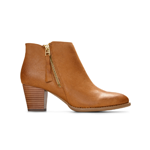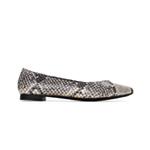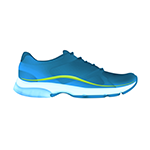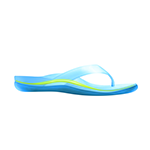Breaking Down the Parts of Sneakers
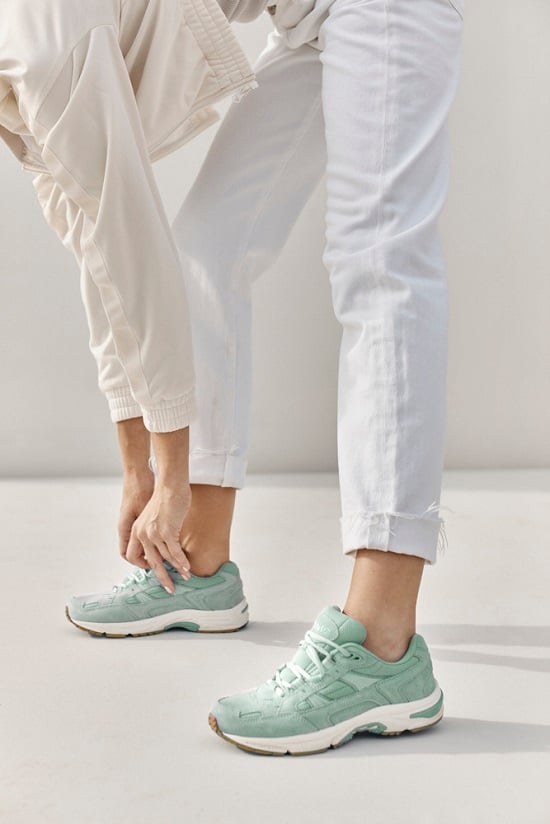
In 2008, archaeologists working in caves in Armenia made a stunning discovery when they uncovered a hand stitched, lace-up shoe. At 5,500 years old, it’s considered the oldest leather shoe in existence.1
We’ve come a long way since that first humble effort, which consists of just one piece of cowhide. These days, modern sneakers often consist of 20 to 30 individual pieces, all of which work together to form a product that is comfortable, durable, and supportive.
Understanding the different parts of the shoe isn’t just trivia for sneakerheads. The importance of a midsole, for instance, or learning how to spot a heel collar that’s likely to chafe can save your feet from troublesome aches and pains.
That’s why we’ve put together this guide to the different parts of a sneaker and included helpful tips on choosing a shoe that’s right for you.
Shoe Anatomy 101: A Guide to Your Sneaker’s Parts
While the exact number of pieces can vary, broadly speaking, there are two main parts: the sole and the upper. Let’s take a closer look at each and dive into their individual components.
The Sole: The Soul of the Shoe
A shoe does not exist without its sole, the layers of rubber, leather, PVC compounds, or other materials that protect your foot from the ground and provide cushioning and support. Most athletic shoe soles consist of three sections:
- The outer sole – Sometimes called the “outsole,” this is the part of the shoe anatomy that most often comes into contact with the ground. The outer sole protects the shoe from wear and tear and also provides tread to keep you from stumbling as you stride.
- The midsole – Wondering, what are midsoles? That cushion little platform between the outsole and the rest of your sneaker is the midsole, which is commonly made of ethyl vinyl acetate (EVA) or foam.2 Midsoles provide much of the cushioning and support available in a shoe, and are sometimes formulated with special tech to ensure a smooth ride.
- The insole – While not technically part of the sole, this removable insert is a thin layer of foam or padding that fits snugly inside the shoe, giving an added boost of protection for your foot. The insole can be easily pulled out for cleaning or replaced entirely by an orthotic for additional support.
The Upper: The Identity of the Shoe
If the sole of the shoe can be said to be its “soul,” the upper could be likened to its personality or identity. That’s because uppers include functional or stylistic elements that allow the shoe to stand out from the crowd.
The shoe upper consists of a variety of different pieces designed to keep your foot secure—and keep you looking fresh. Let’s take a closer look at some common shoe terminology, starting with the toes and moving back toward the heel.
- Vamp – When Elvis said “don’t step on my blue suede shoes,” the vamp was probably the part he was talking about. But exactly what are vamps on shoes? Vamps are the section of material that covers the forefoot and toes. Many leather vamps include ventilation holes or are made of breathable materials for a less stinky-sweaty ride.
- Quarter – Connected to the vamp is the quarter. It is the part of the upper that wraps around the sides and back of the foot. If your kicks contain a flashy logo, it’s probably emblazoned smack dab in the middle of the quarter. The quarter is also the site of overlays that provide additional protection or additional accents of style.
- Eyelets – If you’ve ever replaced the laces on your sneakers, you’ve probably had a bit of fun poking those bands through the eyelets, those round little holes that help you adjust and tighten the fit. While most leather shoes have simple eyelets, sneakers often feature eyestays, those circular pieces made of metal or plastic, to protect the upper from tears.
- Laces – One of the best pieces of the shoe with which to show a pop of personality, laces come in all kinds of styles and colors. Get as creative or complicated you want with your styles and lacing patterns, but the function of the lace remains the same: to limit trips and slips by locking your foot in place.
- Tongue – A multifunctional piece that is connected to the vamp, the tongue of your sneaker pads the top of the shoe and provides a layer between the laces and your foot. Tongues help ensure that everything stays in its right place by keeping debris out and helping to keep your foot in place.
- Collar – Most sneakers include a collar around the ankle that protects against chafing and provides a snugger fit. The collar is often padded and may be made of a sweat-wicking or breathable material for added comfort.
- Pull tab – Not all sneakers have a pull tab, those eye-catching fabric straps inserted in the back of the heel collar. Kind of like a shoe horn, pull tabs are designed to help you get your foot into your shoe with ease.
- Foxing – Since sneakers tend to be our first line of defense against the elements, they often feature additional layers of protection such as the foxing—the additional material built up around the heel.
- Linings – Shoe linings are the fabric stitched inside the shoe that keep the upper of your shoe from chafing against your sock. Linings sometimes come in differentiated colors to keep things interesting inside the sneaker.
What Goes Into a Shoe’s Design?
By now, you can see it’s clear there’s a lot more to the process than choosing pleasing colorways. Even the most basic types of footwear are designed with clear goals in mind. This begs the question, what goes into designing a great sneaker?
There are many factors that designers consider while putting together a new shoe. These include elements like:
- Flexibility – While shoes are intended to provide shock absorption, they must also be pliant enough to allow our feet to move as naturally as possible. While there’s some evidence that running shoes with stiff midsoles can enhance performance, generally speaking, walkers want a supple midsole that doesn’t disrupt the gait.3
- Stability – When your foot strikes the ground, it rolls inward, helping to distribute your weight and absorb shock. 4Everyone does this to some extent, but too much pronation can lead to stinging and soreness from conditions like plantar fasciitis and Achilles tendinitis.5 That’s why many sneakers feature deeper heel cups or extra padding in the midsole to correct this issue.
- Cushioning – Though our early ancestors didn’t enjoy the comfort of modern day sneakers, they also didn’t have to walk on concrete. Even standing for prolonged periods of time on this ubiquitous modern surface can lead to sore feet, swollen legs, or worse. To counteract this problem, many shoe manufacturers choose to beef up their midsoles.6
Keep in mind that how much designers emphasize one feature over the other depends in part on what the shoe is intended for. A trail shoe, for instance, features thick tread for maximal traction and arch support for long, foot-fatiguing treks. A high-performance running shoe for professionals hitting the track, on the other hand, are often designed to weigh as little as possible. That’s why they may offer little to no support in the midsole or under the arch.
Finding The Perfect Fit
When shopping for new athletic sneakers, it’s important to get a sense of the different features that a shoe can offer, such as cushioning or support. But the most important thing? Ensuring your shoes actually fit your feet.
Shoes that are too tight or too small can pinch the toes, cramp the arch, and cause all kinds of problems in your feet, ankles, knees, and even your back.6 They can also lead to long-term torment in the form of conditions like:
- Bunions
- Corns or calluses
- Hammertoes
- Ankle arthritis
- Knee pain
Avoid these issues by taking the following steps when trying on or buying sneakers:
- Bring socks that are close in thickness to what you usually wear.
- Ensure there’s a half-inch of wiggle room between your toe and the end of your sneaker.
- Make sure to walk around a bit to ensure the shoes aren’t likely to rub your ankles raw.
Ever heard the adage, if the shoe fits, wear it? Turns out the inverse is true, too.
Step Into Comfort and Support with Vionic Shoes
Now that you know the difference between a vamp and foxing, you’re ready to shop for shoes with confidence. Whether you’re looking for sneakers that will let you stroll in style, need a helpful fix for that pesky heel pain, or desire a shoe that can stand up to your mid-morning miles, knowing the parts of a shoe can greatly help you in your quest for the perfect fit.
Shoe design can be complicated, but choosing the right shoe doesn’t have to be. At Vionic, we’ve worked with some of the finest minds in health and lower limb biomechanics to develop a range of footwear that’s comfortable and podiatrist-approved. Head to our site to shop today or learn more about our supportive technology.
Sources:
- “First leather shoe.” Guinness World Records. https://www.guinnessworldrecords.com/world-records/first-leather-shoe
- Bumgardner, Wendy.”Making an Athletic Shoe.” VeryWell Fit. Updated 22 May, 2022.https://www.verywellfit.com/athletic-shoe-anatomy-3436349
- Cigoja, Sasa et al. “Can changes in midsole bending stiffness of shoes affect the onset of joint work redistribution during a prolonged run?.” Journal of sport and health science vol. 11,3 (2022): 293-302. doi:10.1016/j.jshs.2020.12.007
- Thieme, Trevor. “How Your Foot Strike Might Affect Your Choice in Shoes.” Men’s Health. 3 April, 2019. https://www.menshealth.com/fitness/a27029210/foot-pronation/
- “Overpronation.” Cleveland Clinic. https://my.clevelandclinic.org/health/diseases/22474-overpronation
- Good, Leigh.”Tips on Standing & Walking on Concrete Flooring.” Livestrong. https://www.livestrong.com/article/351733-tips-on-standing-walking-on-concrete-flooring/
- Buldt, Andrew K, and Hylton B Menz. “Incorrectly fitted footwear, foot pain and foot disorders: a systematic search and narrative review of the literature.” Journal of foot and ankle research vol. 11 43. 28 Jul. 2018, doi:10.1186/s13047-018-0284-z



